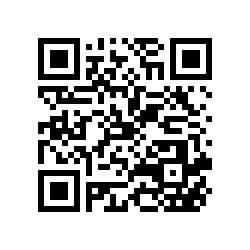Sistem Pengendalian Water Pump Untuk Mengatur Volume Level Air Dengan Logika Fuzzy Pada Pengairan Hidroponik
(1) Universitas Islam Negeri Sumatera Utara, Medan, Indonesia
(2) Universitas Islam Negeri Sumatera Utara, Medan, Indonesia
(3) Universitas Islam Negeri Sumatera Utara, Medan, Indonesia
(*) Corresponding Author
Abstract
Full Text:
PDFReferences
Akhun, N. (2021). Edamame Hidroponik - Protokol Sederhana & Dosis Nutrisi (1st ed.). Nafan Akhun. https://www.google.co.id/books/edition/Edamame_Hidroponik_Protokol_Sederhana_Do/Pt8LEAAAQBAJ?hl=en&gbpv=0&kptab=overview.
Alfita, R., Mamlu’ah, D., Ulum, M., & Nahari, R. V. (2017). Implementation of Fuzzy Sugeno Method for Power Efficiency. International Journal of Advanced Engineering Research and Science, 4(9), 1–5. https://doi.org/10.22161/ijaers.4.9.1.
Chaudhuri, A. B. (2020). Flowchart and Algorithm Basics. David Pallai. https://terrorgum.com/tfox/books/flowchartandalgorithmbasics.pdf.
Fathulloh, & Budiana, N. S. (2020). Akuaponik. Penebar Swadaya Grup. https://www.google.co.id/books/edition/Akuaponik/ruIhEAAAQBAJ?hl=en&gbpv=0.
Furqan, M., Sriani, Hasugian, A. H., & Hsb, M. S. (2021). Penentuan Kualitas Bibit Padi Menggunakan Metode Fuzzy Mamdani. Jurnal Sains Komputer & Informatika (J-SAKTI), 5(September), 529–539.
]Ghita, M., Diaz, R. A. C., Birs, I. R., Copot, D., & Ionescu, C. M. (2022). Ergonomic and Economic Office Light Level Control. Energies, 15(3), 1–14. https://doi.org/10.3390/en15030734.
Gokceli, S., Zhmurov, N., Kurt, G. K., & Ors, B. (2017). IoT in Action: Design and Implementation of a Building Evacuation Service. Journal of Computer Networks and Communications, 2017. https://doi.org/10.1155/2017/8595404.
Hemanth, D. J., Malathi, S., & Kumar, V. D. A. (2020). Intelligent Systems and Computer Technology. IOS Press. https://www.google.co.id/books/edition/Intelligent_Systems_and_Computer_Technol/gK4SEAAAQBAJ?hl=en&gbpv=0.
Kadang, M. O. (2021). Algoritma dan Pemrograman (A. K. Muzakkir (ed.); 1st ed.). Humanities Genius. https://www.google.co.id/books/edition/Algoritma_dan_Pemrograman/2UpEEAAAQBAJ?hl=en&gbpv=0.
Kahraman, C., & Aydın, S. (2021). Intelligent Systems in Aviation 4.0 Industry (1st ed.). Springer, Cham. https://link.springer.com/chapter/10.1007/978-3-030-75067-1_2.
Nicolosi, G., Volpe, R., & Messineo, A. (2017). An innovative adaptive control system to regulate microclimatic conditions in a greenhouse. Energies, 10(5). https://doi.org/10.3390/en10050722.
Nowicki, R. K. (2019). Rough Set–Based Classification Systems (1st ed.). Springer, Cham. https://doi.org/10.1007/978-3-030-03895-3.
Purwaningtyas, F. (2018). Sistem Water Level Control Untuk Budidaya Ikan Gurame Menggunakan Logika Fuzzy Berbasis Mikrokontroler. (November), 48–57.
Sakti, S. P. (2017). Pengantar Teknologi Sensor (1st ed.). Universitas Brawijaya Press. https://www.google.co.id/books/edition/Pengantar_Teknologi_Sensor/xWtODwAAQBAJ?hl=en&gbpv=0.
Sapkota, S., Sapkota, S., Liu, Z. (2019). Effects of Nutrient Composition and Lettuce Cultivar on Crop Production in Hydroponic Culture. Journal of Holticulturae, 5(4), 1–8. https://www.mdpi.com/2311-7524/5/4/72.
Shouran, M., Anayi, F., Packianather, M., & Habil, M. (2022). Algorithm for LFC of Two-Area Power System.
Sitio, S. L. M. (2018). Penerapan Fuzzy Inference System Sugeno untuk Menentukan Jumlah Pembelian Obat (Studi Kasus: Garuda Sentra Medika). Jurnal Informatika Universitas Pamulang, 3(2), 104. https://doi.org/10.32493/informatika.v3i2.1522.
Zhang, J., Li, H., Ma, K., Xue, L., Han, B., Dong, Y., Tan, Y., & Gu, C. (2018). Design of PID temperature control system based on STM32. IOP Conference Series: Materials Science and Engineering, 322(7). https://doi.org/10.1088/1757-899X/322/7/072020
DOI: https://doi.org/10.30645/brahmana.v4i2.186
DOI (PDF): https://doi.org/10.30645/brahmana.v4i2.186.g185
Refbacks
- There are currently no refbacks.
Published Papers Indexed/Abstracted By:















